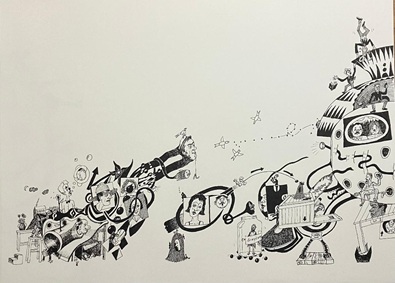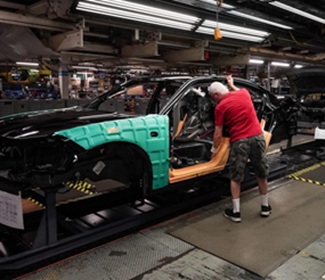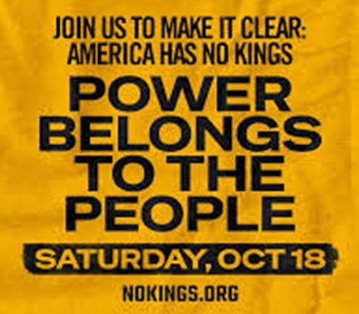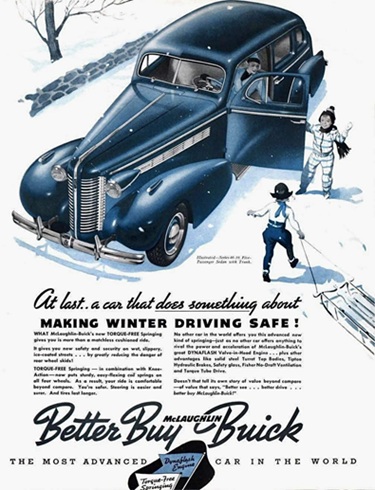Democracy in America & the McLaughlin-Buick — “Canada’s Standard Car” 1923–1942 : fate of Canadian auto sector in Donald Trump’s USA Part Deux
Oct 18th, 2025 | By Randall White | Category: In BriefRANDALL WHITE. FERNWOOD PARK, TORONTO. SATURDAY, OCTOBER 18, 2025. To start with on this particular date, best wishes to all those next door, standing up for the Democracy in America that Alexis de Tocqueville brought to the wider world’s attention in the 1830s — the ultimate brilliant blossom of the American Declaration of Independence in 1776.
(As the historian Jill Lepore has recently urged, the final US Constitution of 1787-89 was of course imperfect, like all other mere human creations, and especially in its tacit acceptance of Indigenous repression and African slavery. The United States of Amerca was intended from the start to evolve towards an ever “More Perfect Union” — as in the 14th Amendment of 1868 on birthright citizenship, and the broader Civil Rights Act of 1964.)
Meanwhile, up here in what the Canadian fur-trade historian Harold Innis liked to call “northern North America” more than a few media and related voices have been raised in concern over such headlines as : “BREAKING NEWS : Stellantis moves Jeep production from Ontario to Illinois.” (President Donald Trump is apparently serious about the hardcore 19th century proposition that all automobiles sold in the USA must be exclusively manufactured in the USA.)
Gus Carlson, “New York-based communications and marketing consultant” who writes for the Globe and Mail (“Toronto’s national newspaper with a Vancouver edition”) has recently urged that “Canadian leaders are naive to be shocked over Stellantis pulling Jeeps from Brampton.”
(1) Manufacturing down from 23.8% of Ontario labour force in 1980 to 9.9% in 2024 (and today’s auto sector only 1.9%)
The day before Gus Carlson’s piece appeared, my counterweights editors brethren had reacted to a social media post on “BREAKING NEWS : Stellantis moves” from Alberta Memes (“Oh wow, poor Canada. Glad I live in Alberta”). Somewhat like Carlson the editors urged : “Plain truth is this has very little impact on most of us in Ontario in 2025 … Canada is a great country with a great future in all its vast geography.”
The further logic here is that manufacturing employment generally is not at all as important in Ontario as it used to be. (In a now largely vanished past where the real world at the bottom of many still current Canadian regional legends largely lies.)
In 1980, for instance, manufacturing accounted for some 23.8% of the Ontario labour force. By 2024 this number had fallen to 9.9%. The Canada-wide sector is not as concentrated in Ontario today either. According to Statistics Canada’s January 2025 Labour Force Survey : “The manufacturing sector, which has dependencies on US demand for Canadian exports, accounts for 8.9% of total employment in Canada.”
The more narrow auto sector chunk of manufacturing generally is smaller again, even in its provincial heartland. According to a recent Statistics Canada sectoral profile : “There were 136,300 people employed in the Ontario motor vehicle, body, trailer and parts (MVBTP) manufacturing industry, comprising 1.9% of Ontario’s total workforce in 2021.”
(2) Time at last for a real Canadian car????
Like almost everyone else, I suppose, even with such relative qualifications I think the future of MVBTP manufacturing industry in both Ontario and Canada at large remains an interesting and important key current issue in northern North America.
Howard Lutnick or some such person has recently seemed to suggest that what Canadian pundit Andrew Coyne has aptly called the “madhouse” of the Trump II administration is dead serious about implementing the hardcore 19th century proposition that all automobiles sold in the USA must be exclusively manufactured in the USA. And, it has apparently been said, the only question is “what is Canada going to do about it.”
The preferred Trump II answer of course is just that if Canada finally does join the United States at long last (as it was originally invited to do back in the 1770s!) then its auto sector will be inside the USA, and its auto sector jobs will be secure — even in the madhouse of Trump’s America Part Deux.
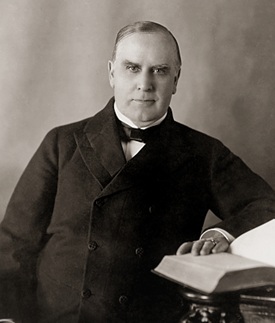
Given that almost 80% of the Canadian people in “the true north strong and free” do not approve of Donald Trump — and much less of the remainder (a mere 10%) actually do want to join the USA with eg no universal public healthcare (ie medicare for all) and on and on — this is not at all likely to happen. But if we have to go back to the later 19th century, the real-world history does suggest a different and arguably more plausible answer.
Back then in a somewhat comparable age to at least Trump’s America II, what Canada did with the high tariffs of the “American System” was just copy them with its own similar “National Policy.” And this reminded me of a somewhat earlier (October 9) reaction from my counterweights editors brethren to overwrought concern that the “U.S. wants every car made in America and Canada’s auto industry is on the chopping block.”
Here the editors wondered : “Time at last for a real Canadian car???? Does our auto sector have anything close to what it would take for this???? If drivers in US won’t buy cars made in Canada, drivers in Canada won’t buy cars made in US. (That’s how we got branch plant auto sector in first place!).”
(3) A new McLaughlin-Buick of the 2020s (and a little beyond?)
Without at this point getting into any of the admittedly serious and even tough questions at the bottom of this kind of wild and crazy suggestion, I just want to conclude by noting that in the midst of all this I quite accidentally stumbled online into a 1938 print ad for The McLaughlin-Buick — “Canada’s Standard Car.”
Very briefly the old big-time horse-and-buggy McLaughlin carriage works in Oshawa, Ontario turned itself into the McLaughlin Motor Car Company in the early 20th century. From 1908 to 1923 the firm made automobiles with “McLaughlin bodies with Buick engines but just branded McLaughlins.”
In 1918 McLaughlin Motor Car entered an agreement with General Motors in the USA that created General Motors of Canada.
And from 1923 to 1942 the firm in Oshawa made “McLaughlins” with Buick engines branded “McLaughlin-Buick”.
(Which do seem to have become quite like plain Buicks in the USA by the late 1930s !)
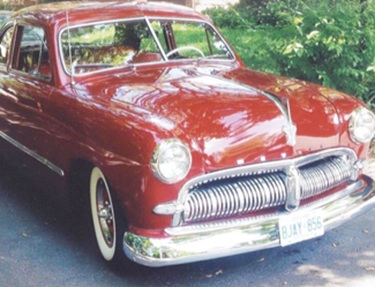
So … to keep up with the craziness of the Trump II regime down south, what if a Canadian car of the 2020s could be something as simple as a body and related parts put together in Halifax, Montreal, Oshawa, Brampton, Oakville, Windsor, Winnipeg, Saskatoon, Edmonton, Vancouver, with say a Ford-150 engine imported from the USA?
(And presumably even the outrageous 19th century nationalist Donald Trump is not going to prohibit US auto products being purchased in non-US markets!)
In any case would some modern 2020s version of the McLaughlin-Buick of the 1920s, 1930s, and early 1940s be a more achievable “Canadian car” objective, if Trump’s America Part Deux actually does last some ridiculously long time after the great con man himself fades into the original White House woodwork, in Washington, DC?
